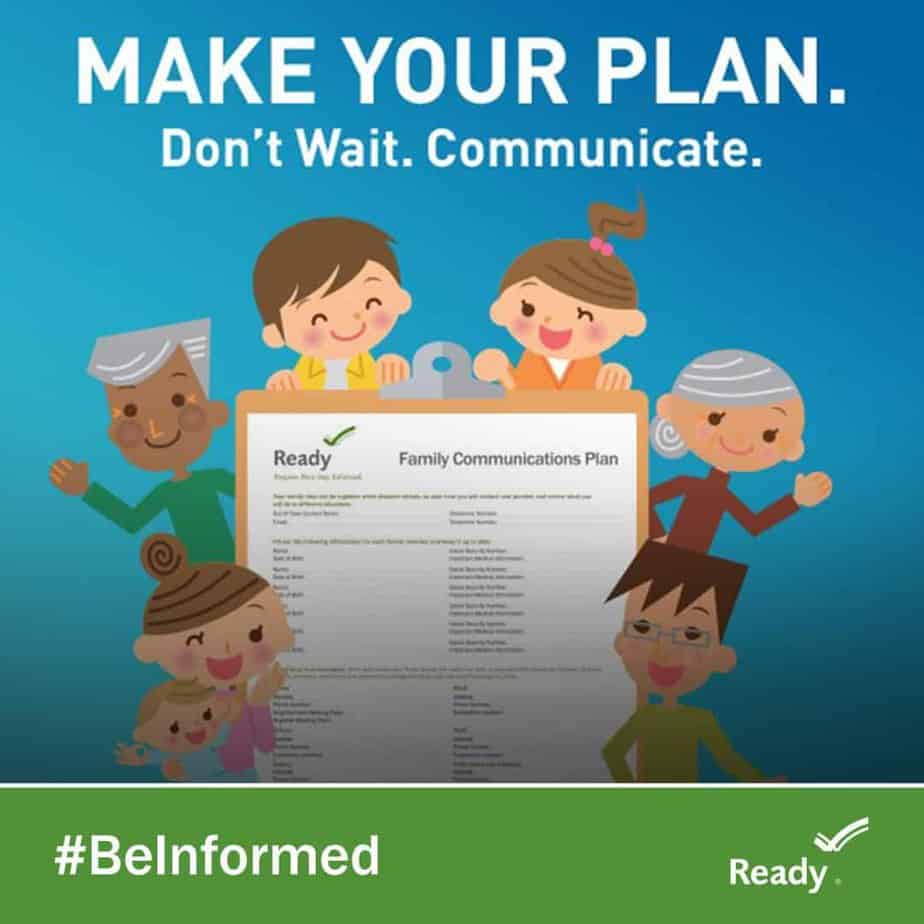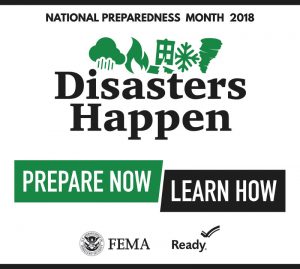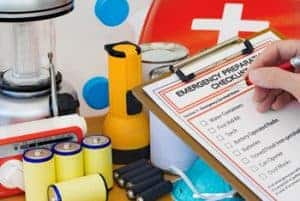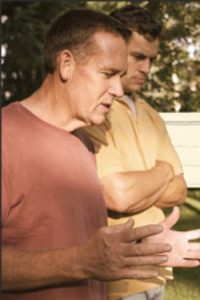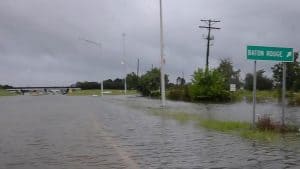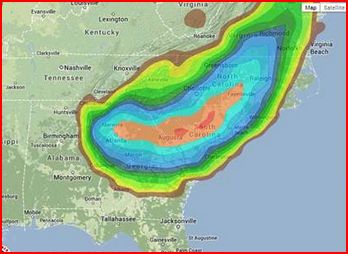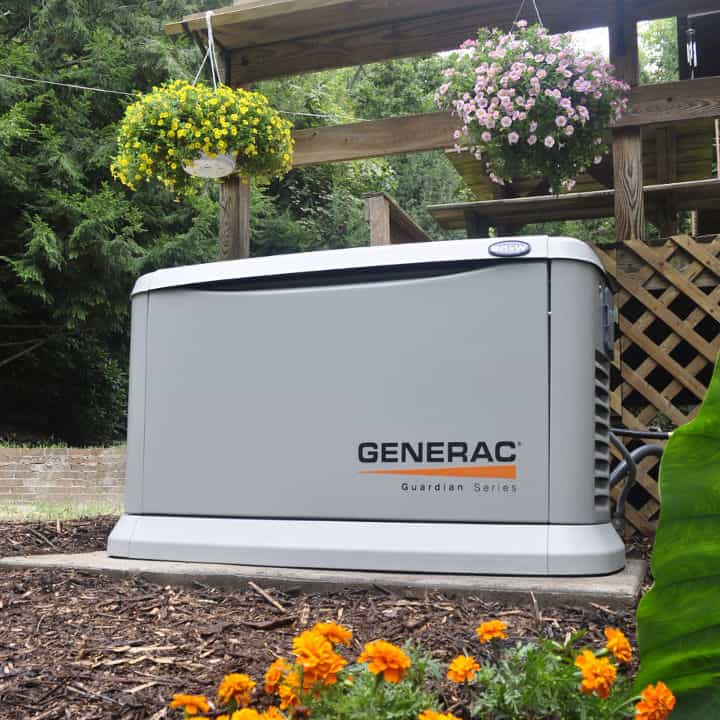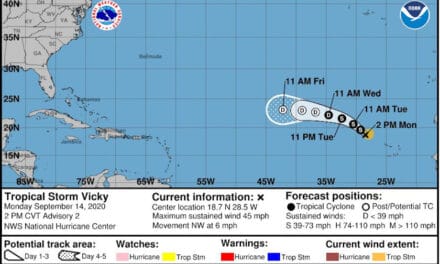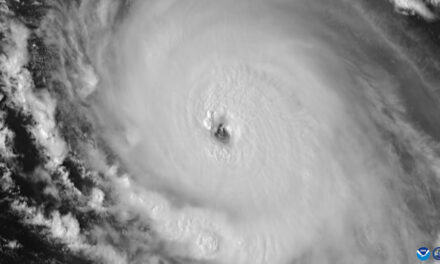Plan Ahead for Disasters – Share Your Plan – Encourage Family and Friends
Disasters often happen with little or no warning and no time to prepare. A tornado can strike just minutes after forming and a Watch can turn into a tornado warning just moments before the tornado touches down and leaves a swath of destruction. Hurricanes usually offer at least a day or more of warning, but we rarely know the actual path and likely landfall location until 48 to 72 hours before they reach the coast which leaves scant time to prepare.
Having a disaster plan for your home, family, or business alleviates worry and makes it easier to respond to the emergency before, during, and after it happens. For example, starting about 36 hours before a hurricane makes landfall, your hurricane plan includes a series of preparation steps to ensure your family is ready to leave or ride out the storm at home. Those steps come from a plan made in advance. There’s nothing to figure out, almost no supplies to purchase, and while neighbors scramble to buy plywood or bottled water from dwindling local supplies, yours are already on hand.
No region of the United States is immune to disaster, though the types of disasters vary widely. In the last ten years, the United States Government has declared a disaster or state of emergency more than 1000 times. From extreme heat in the Southwest to blizzards in the Midwest and portions of the East Coast, extreme weather can cripple communities and put anyone at risk. Wherever you live, extended power outages can make life inconvenient and often dangerous. #PrepareNow
Know Your Risks—Make Your Plans
Make Your Plans
Disaster – a calamitous event such a flood, wildfire, hurricane, or another event that causes or has the potential to cause great loss of life, damage, or hardship to a specific region or to those associated with the event, such as a passenger jet crash.
Emergency – a sudden, urgent, and unexpected occurrence requiring immediate action and relief.
A state of emergency declared in advance of an impending disaster such as a hurricane allows governments to put emergency plans into action and notifies the general public to act on their own plans. Just as the government has a disaster plan and the equipment and supplies to deal with it, every family should also make plans and prepare.
Know the risks of possible disasters that could happen where you live. Prioritize your plans based on those most likely to happen. For example, in Minnesota, the likelihood of a blizzard outweighs the possibility of a volcano erupting. In the Florida Keys, blizzards won’t bother you at all, but an approaching hurricane could mean mandatory evacuation. Work on planning for the disasters most likely to occur first. After planning and preparing for the disaster, then plan and prepare for less likely occurrences.
Plans and preparation go hand in hand. For example, your plan might include storing enough water for one week for each person. Preparing that portion of your plan means that your family of four needs one gallon per person per day, or at least 28 gallons of water (4 people x 7 days x 1 gallon.) In another example, FEMA recommends a generator to protect food and medicine supplies, run medical equipment, and provide basic necessities. Implementing that portion of the plan could mean the purchase of a portable generator and a garage full of gasoline or the installation of a standby generator that doesn’t need refueling because it runs on natural gas or propane.
Make a Plan to Use Portable Generators Safely
Practice and Share
Knowing what to do just before, during, and after a disaster makes dealing with the emergency situation easier for everyone and it can also prevent potentially fatal mistakes. It may not sound difficult, but in the hurry to leave during an evacuation some important tasks might end up forgotten. Something as minor as a child’s favorite toy left behind could increase anxiety and fear while forgetting to shut off the gas or water could turn into another disaster at home. That’s why it’s important to have a plan and to practice putting it in motion. #NatlPrep
It’s almost like a fire drill (another good idea.) Plan a series of steps to prep the house for the impending disaster and leave. Everyone grabs their personal emergency bag. The family emergency disaster kit goes in the car—which you filled with gas before the emergency declaration—and the family leaves along a designated evacuation route. Because of the advance planning and preparation, your family leaves ahead of the rush and subsequent traffic jams along a familiar route.
What Size Generator Do I Need?
Resource Planning
A variety of resources ranging from local emergency response information to government agency readiness plans can help everyone with planning, preparation, and to stay informed before, during, and after a disaster. Bookmark websites on smartphones, tablets, and computers or laptops to keep them easily accessible. Download and print materials, then customize them to fit your family’s needs.
Financial resources are also important. Do you have flood insurance? Homeowner insurance policies don’t cover weather and disaster-related flooding. The National Flood Insurance Program offers flood insurance available to everyone. Anywhere it rains, it can flood. #FloodSmart
After determining your risk factors and the possible damages to your home, contact your homeowner insurance agent and ask specific questions to determine what they cover and don’t cover. Moreover, make sure that valuables such as jewelry have the appropriate riders and coverage.
Disasters can take down electronic communications which can render ATMs useless. High use can also empty the machines of cash, leaving you without the ability to access your money. Keep enough cash on hand for at least a few days and start saving for an emergency. Nearly 40 percent of all Americans have less than 400 dollars saved, not nearly enough to pay bills after a disaster.
Make copies of important documents. Keep one set in a bank box and another at home to take with you or to have available when the bank copy is inaccessible. Scan copies to store in the cloud as a backup to the first two methods. Another option – put a scanned copy on a USB stick or drive encrypted with a passphrase that you won’t easily forget.
Best Standby Generator Packages for Disasters and Emergencies
Important Links to Bookmark
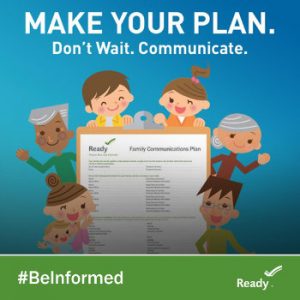
Communicate Your Plans with Family, Friends, and Neighbors and encourage them to make their own plans.
Organize your emergency preparedness links on your phone, laptop, or tablet to keep them easily accessible. The FEMA mobile app will help you keep you informed and help you prepare.
Ready.gov (FEMA) has information on preparing for many types of disasters and emergencies.
Download the FEMA Mobile App—Real-Time Alerts from National Weather Service, Emergency Safety Tips, Locate Emergency Shelters and Disaster Recovery Centers.
Norwall PowerSystems provides online resources and information about current disasters and how to keep your home and family safe.
Text PREPARE to 4FEMA (43362) to receive preparedness tips from the Federal Emergency Management Agency.
The American Red Cross Mobile Apps provide information on Preparedness, Various Disasters, Fun Information for Children, and Medical Professionals.
Department of Homeland Security (DHS) has tips and information to help prepare your family for a disaster.
FEMA has state-specific pages on their website. Go to Ready.gov, click the search icon, and enter your state name for a list of resources specific to your state.
FEMA also provides links to state emergency management agencies. Click the first letter of your state, find your state in the expanded section, then click the link for your state’s emergency management agency and bookmark the page. The phone numbers and other information provides may also prove useful.

